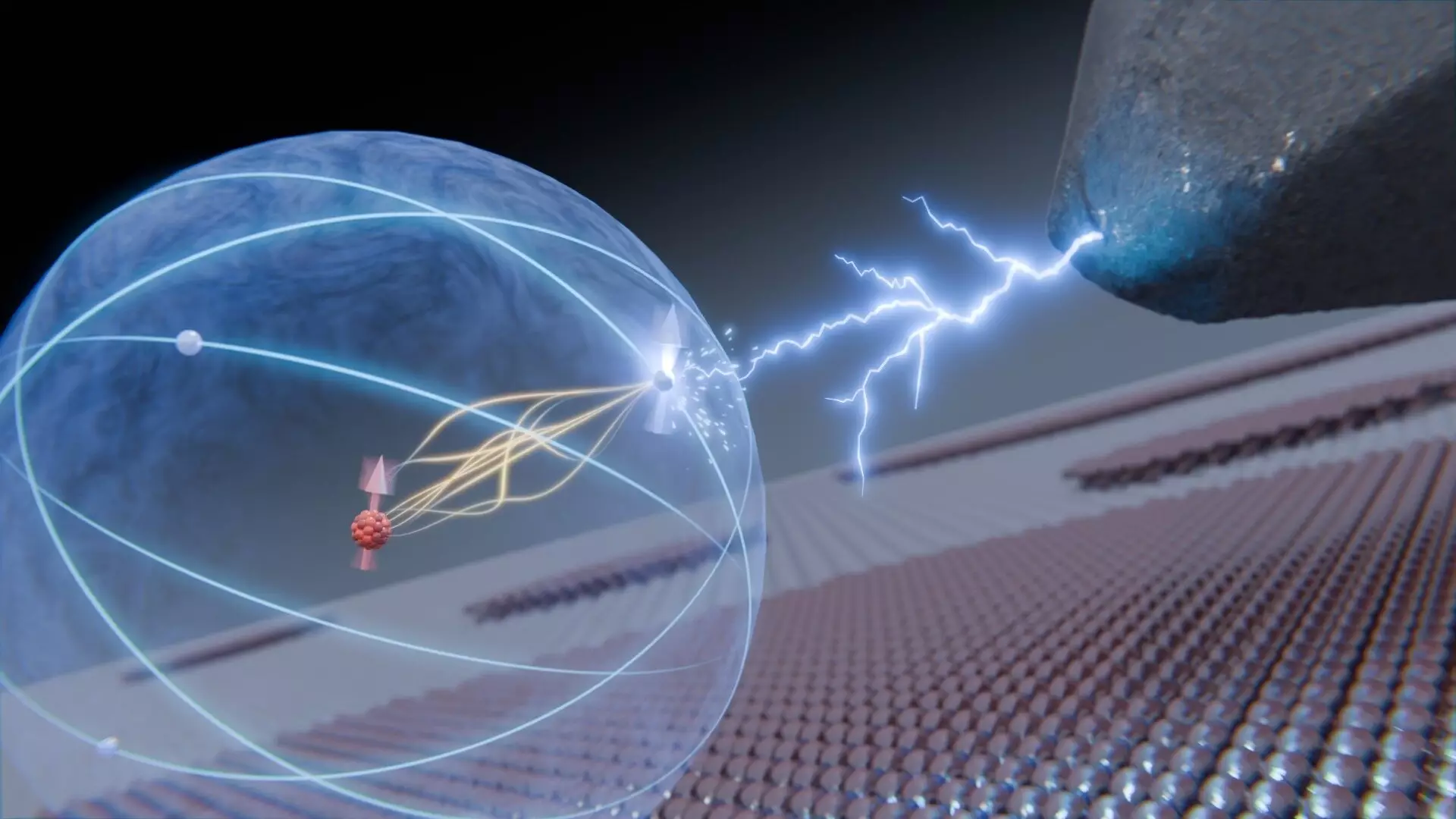In a significant scientific breakthrough, researchers at Delft University of Technology in the Netherlands have embarked on an ambitious journey into the microscopic realm of atomic structures. By demonstrating the capacity to control movements within the atomic nucleus, the researchers have opened the door to new possibilities in quantum information storage. This innovation hinges on their successful interaction between the atomic nucleus and outer electrons, as detailed in their recent publication in the esteemed journal, Nature Communications.
Focusing on an isolated titanium atom, specifically Ti-47, the research team, led by Sander Otte, has made noteworthy advancements. Unlike its more prevalent counterpart Ti-48, Ti-47 possesses a neutron deficit, which grants its nucleus distinctive magnetic properties. The implication of this defect is paramount, as it allows the atomic nucleus to function as a “spin,” akin to a tiny compass needle, pointing in various directions. This orientation holds vital quantum information. Notably, the nucleus exists in an expansive void within the atom, largely unaffected by external forces, yet capable of a subtle interaction with spinning electrons due to a phenomenon known as “hyperfine interaction.”
While the potential of this research is immense, achieving successful manipulation of nuclear spin is fraught with challenges. The hyperfine interaction is exceedingly weak and demands precise conditions to be effective. As Lukas Veldman, who recently concluded his Ph.D. dissertation with honors, noted, creating a stable experimental environment required meticulous calibration of magnetic fields. Only under these tailored conditions could they exert influence over the electron’s spin, a feat that initially appeared nearly insurmountable.
After meticulously aligning the requisite conditions, the researchers utilized a voltage pulse to disrupt the equilibrium of the electron spin, leading to a synchronized wobble between the nucleus and the electron for a mere fraction of a microsecond. This moment reflects the principles outlined in Schrödinger’s theoretical frameworks, underscoring the relationship between quantum mechanics and experimental observation. The scientists achieved a remarkable concordance between theoretical calculations and experimental data, further substantiating the notion that no quantum information is lost during these atomic interactions.
The implications of this research extend beyond theoretical significance; they potentially pave the way for robust quantum computing systems that leverage nuclear spins to store information securely. These findings enhance our understanding of atomic properties and enable the safe isolation of quantum data from environmental noise. Despite the promising applications, Otte emphasizes that the primary motivation behind their research lies in the sheer ability to manipulate matter on an unimaginably minute scale, a feat that pushes the boundaries of human capability.
As these pioneering studies illustrate, the intricate dance between atomic particles can lead to profound implications for quantum technology. The ability to control nuclear spins promises a new frontier in how we comprehend and utilize quantum mechanics—transforming abstract theories into tangible technologies that could redefine our digital future. With continued exploration and experimentation, we stand on the brink of a quantum revolution that fundamentally alters our interaction with the building blocks of matter.


Leave a Reply